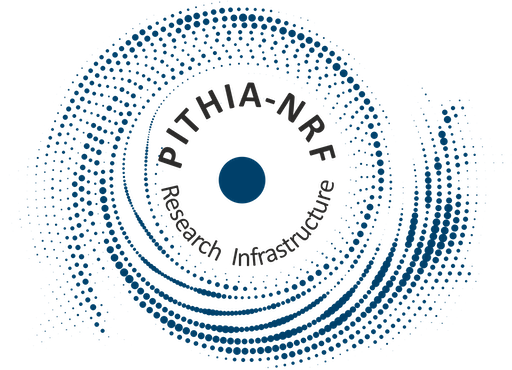Level 4
Last modified on Apr 28th, 2022, 10:30
Definition
Model computations generated with or without analysis of the lower-level data. May include additional resources external to the data collection (such as characterizations of the geospace activity or additional observations in the multi-instrument experiments).
Registrations Using this Term (117)
Computation Capabilities
- Activity Indicator: Solar Active Region Classification
- B0B1_qModel
- BSPM: density predictions as 2D maps
- Current ionospheric conditions at each ionosonde location
- DSO index computation using EUHFORIA Heliosphere model output at L1
- Dst index computation using EUHFORIA Heliosphere model output at L1
- DTM: density predictions as 2D maps, latitude vs solar local time
- DTM: temperature predictions as 2D maps, latitude vs solar local time
- EISCAT Radar Vector Parameters
- EIS foF2 Forecast Maps
- EIS foF2 Forecasts Over Digisonde Stations
- EIS foF2 Long Term Prediction Maps
- EIS foF2 Nowcast Maps
- EIS hmF2 Nowcast Maps
- EIS Ionospheric Alerts
- EIS Near Real-Time TEC Maps
- eSWua Ground Based Scintillation Climatology (GBSC) statistical model
- eSWua IONORING tool: Short-term forecasting of vTEC
- eSWua IONOWORLD tool: 24-hr forecasting vTEC estimation
- EUHFORIA: Conditions of the heliospheric wind and CMEs
- EUHFORIA: Solar wind boundary conditions
- HF communications: Position of a radiolink midpoint
- HF-INT LSTID event list
- hmF2_qModel
- IRI: 3D electron density from 2D maps of standard IRI anchor parameters
- IRI: Empirical quiet-time model of foF2 critical frequency as 2D maps in Jones-Gallett formalism
- IRI: NmF2 map from foF2 map
- IRI: NmF2 value from foF2 value
- IRI: Vertical Ne profile from its standard IRI anchor parameters
- Kp computation using EUHFORIA Heliosphere model output at L1
- NEDM2020: ionosphere electron density
- NOAA-SWPC predicted sunspot number and F10.7 radio flux
- NTCM G: Galileo single-frequency ionospheric corrections
- Plasma: Ne value from fpe value
- RayTRIX: analytical raytracing through CQP vertical Ne profile at midpoint
- SWIF Model
- TechTIDE European maps of ionospheric characteristics foF2 and hmF2
- TechTIDE LSTID activity index
- T-FORS LSTID Forecasting with TFT
- T-FORS ML model for LSTID forecasting over Europe
- The 1D EDD version of the TaD Model
- The hybrid NeQuick-Digisonde-TaD (HyNT) model
- The NeQuick ionosphere electron density model
Processes
- B0B1_qModel calculation
- BSPM: 3D-Kinetic plasmasphere model
- DTM2020-operational: semi-empirical thermosphere model
- EISCAT Tristatic UHF Vector Parameter Measurement
- EISCAT Tristatic VHF Vector Parameter Measurement
- eSWua Ground Based Scintillation Climatology (GBSC)
- EUHFORIA: Geoeffect Indices Kp, Dst, Dso
- EUHFORIA: Heliospheric wind and CME evolution
- HF Communications: RayTRIX-CQP and IRTAM to synthesize oblique ionograms for a given radiolink
- HF-INT LSTID event list
- hmF2_qModel calculation
- IPIM : Ionosphere-Plasmasphere IRAP Model
- IRTAM: 3D global real-time map of ionospheric electron density using NECTAR assimilation technique
- NEDM2020: ionosphere electron density model calculation
- NOAA-SWPC predicted sunspot number and F10.7 radio flux
- NTCM G: Galileo single-frequency ionospheric corrections model calculation
- Process for the EIS foF2 Forecast Maps
- Process for the EIS foF2 Forecasts Over Digisonde Stations
- Process for the EIS foF2 Long Term Prediction Maps
- Process for the EIS foF2 Nowcast Maps
- Process for the EIS hmF2 Nowcast Maps
- Process for the EIS Ionospheric Alerts
- Process for the EIS Near Real-Time TEC Maps
- Process for the provision of EIS current ionospheric conditions at each ionosonde location
- Process of providing the LSTID activity index by the TechTIDE European and South African Digisonde Network
- SWIF Model
- TechTIDE European maps of ionospheric characteristics foF2 and hmF2
- T-FORS LSTID forecasting over Europe
- T-FORS LSTID Forecasting with TFT
- The 1D EDD version of the TaD Model
- The hybrid NeQuick-Digisonde-TaD (HyNT) model
- The NeQuick ionosphere electron density model
Data Collections
- Bottom-side thickness and shape model
- BSPM: 3D-Kinetic plasmasphere model
- DTM2020-operational: semi-empirical thermosphere model
- EISCAT Svalbard Radar Data in the Madrigal Database
- EISCAT UHF Radar Data in the Madrigal Database
- EISCAT UHF Radar Vector Data in the Madrigal Database
- EISCAT VHF Radar Data in the Madrigal Database
- EISCAT VHF Radar Vector Data in the Madrigal Database
- EIS current ionospheric conditions at each ionosonde location
- EIS foF2 Forecast Maps
- EIS foF2 Forecasts Over Digisonde Stations
- EIS foF2 Long Term Prediction Maps
- EIS foF2 Nowcast Maps
- EIS hmF2 Nowcast Maps
- EIS Ionospheric Alerts
- EIS Near Real-Time TEC Maps
- eSWua: Ground Based Scintillation Climatology (GBSC)
- eSWua IONORING tool: Short-Term Forecasting TEC maps over Italy
- eSWua IONOWORLD tool: Long-term forecasting global TEC maps
- EUHFORIA: EUropean Heliospheric FORecasting Information Asset
- F peak height model
- HF-INT LSTID event list
- HF Signal Raytracing: RayTRIX-CQP, Oblique ionogram synthesizer with E, F1, F2 layer echo traces and MUFs, driven by IRTAM ionospheric nowcast
- IPIM : Ionosphere-Plasmasphere IRAP Model
- IRI: International Reference Ionosphere version 2001
- NEDM2020: ionosphere electron density model
- NeQuick ionosphere electron density model
- NOAA-SWPC predicted sunspot number and F10.7 radio flux
- NTCM G: Galileo single-frequency ionospheric corrections model
- SWIF Model
- TechTIDE European maps of ionospheric characteristics foF2 and hmF2
- TechTIDE LSTID activity index
- T-FORS LSTID forecasting over Europe
- T-FORS LSTID Forecasting with TFT
- The 1D EDD version of the TaD Model
- The hybrid NeQuick-Digisonde-TaD (HyNT) model
Data Subsets
- TFT LSTID forecasting model for JR055: training period 01/01/2022-30/06/2023
- TFT LSTID forecasting model for DB049: training period 01/01/2022-30/06/2023
- TFT LSTID forecasting model for EB040: training period 01/01/2022-30/06/2023
- TFT LSTID forecasting model for SO148: training period 01/01/2022-30/06/2023
- TFT LSTID forecasting model for SO148: training period 01/01/2022-27/04/2024
- TFT LSTID forecasting model for DB049: training period 01/01/2022-24/07/2024

